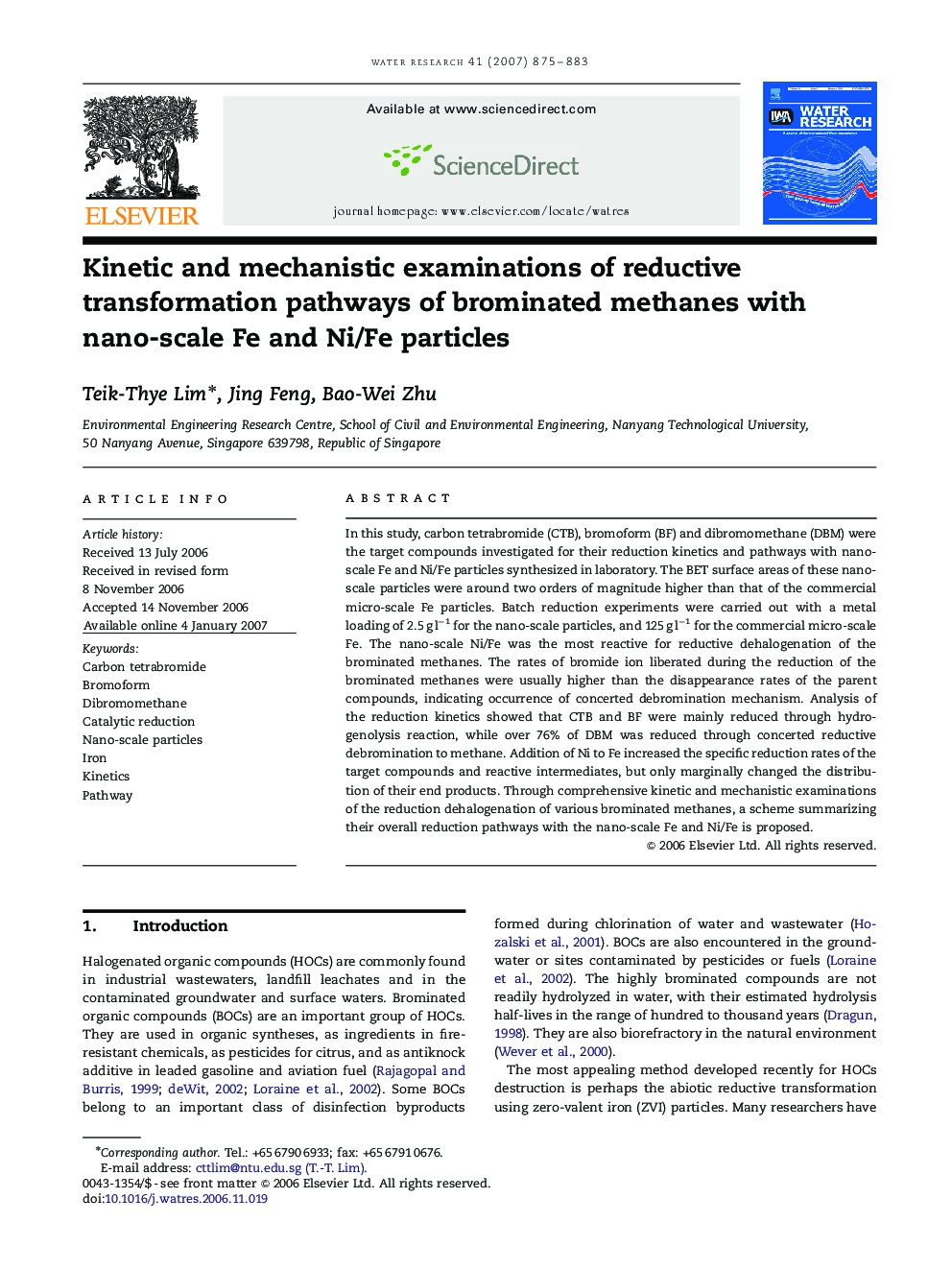| کد مقاله | کد نشریه | سال انتشار | مقاله انگلیسی | نسخه تمام متن |
|---|---|---|---|---|
| 4485547 | 1316956 | 2007 | 9 صفحه PDF | دانلود رایگان |

In this study, carbon tetrabromide (CTB), bromoform (BF) and dibromomethane (DBM) were the target compounds investigated for their reduction kinetics and pathways with nano-scale Fe and Ni/Fe particles synthesized in laboratory. The BET surface areas of these nano-scale particles were around two orders of magnitude higher than that of the commercial micro-scale Fe particles. Batch reduction experiments were carried out with a metal loading of 2.5 g l−1 for the nano-scale particles, and 125 g l−1 for the commercial micro-scale Fe. The nano-scale Ni/Fe was the most reactive for reductive dehalogenation of the brominated methanes. The rates of bromide ion liberated during the reduction of the brominated methanes were usually higher than the disappearance rates of the parent compounds, indicating occurrence of concerted debromination mechanism. Analysis of the reduction kinetics showed that CTB and BF were mainly reduced through hydrogenolysis reaction, while over 76% of DBM was reduced through concerted reductive debromination to methane. Addition of Ni to Fe increased the specific reduction rates of the target compounds and reactive intermediates, but only marginally changed the distribution of their end products. Through comprehensive kinetic and mechanistic examinations of the reduction dehalogenation of various brominated methanes, a scheme summarizing their overall reduction pathways with the nano-scale Fe and Ni/Fe is proposed.
Journal: Water Research - Volume 41, Issue 4, February 2007, Pages 875–883